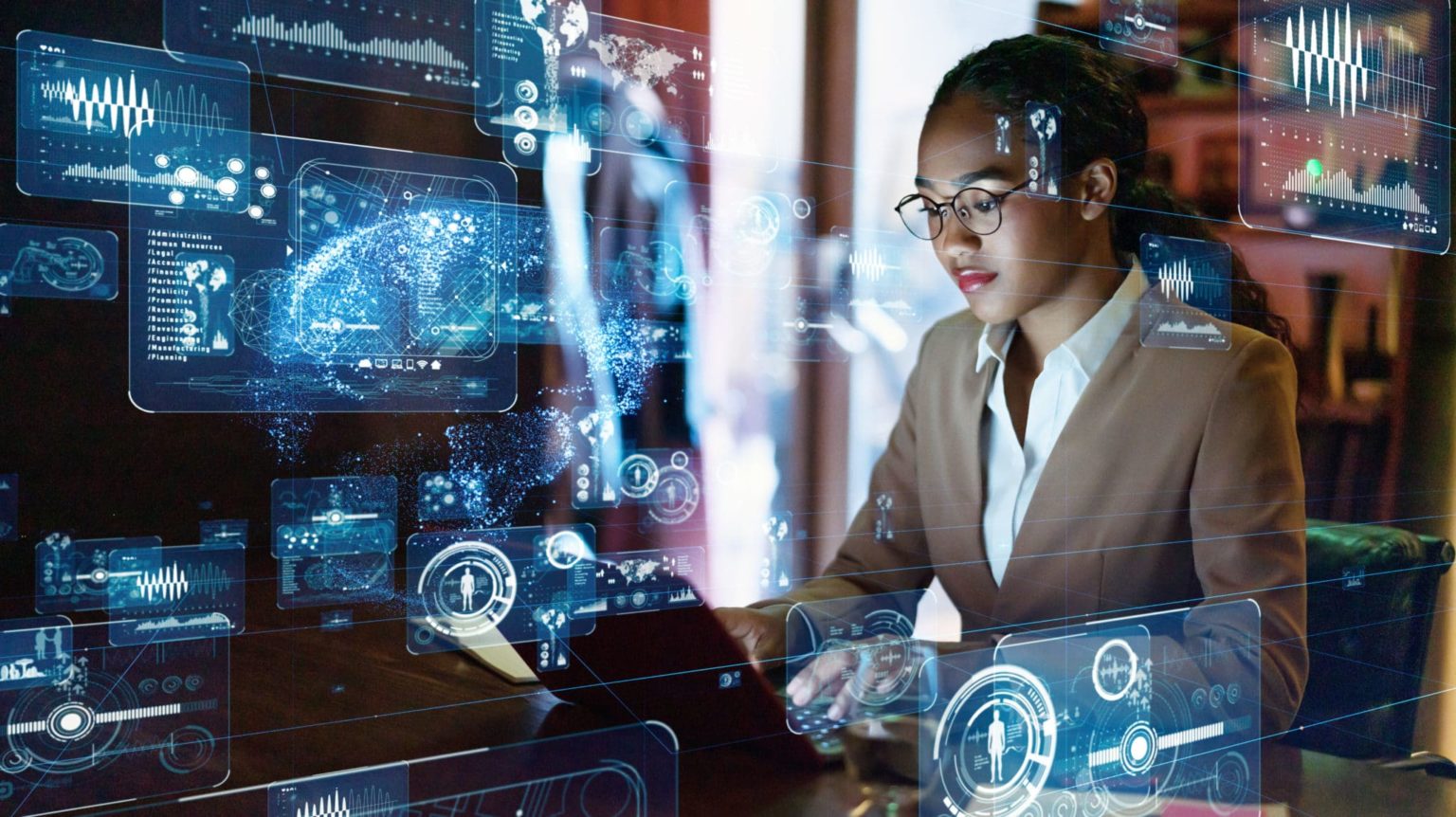Exclusive: Why visitor management tech is in high demand


James Thorpe
Share this content
Lee Copland, Managing Director, Maxxess EMEA discusses the use of visitor management systems in a post-pandemic world.
Over the last year many surveys have pointed to the fact that home working doesn’t significantly harm productivity. In fact, they’ve concluded, employees are more productive and more satisfied when they don’t have to spend long days in the office.
Employers may see things differently of course – as may governments, city authorities, banks and the owners of coffee outlets, understandably concerned about the financial implications of a sustained mass exodus from city centres and business districts.
But a fast return to the old ways of working seems unlikely. Many organisations operating in today’s more fluid landscape are still feeling their way.
Much will depend on wider pressures in the labour market and how much leverage employers can apply – or what incentives they can offer – if they are really determined to get home-working staff back to offices.
What does seem certain is that in the post-pandemic world many workplaces and corporate facilities will need to be used more flexibly, or in some cases scaled down, redesigned and repurposed. In those cases, changes to working patterns will be sustained, with more hybrid working that combines a mix of hours spent at home and in the workplace. And that shift applies to some security professionals too: we are already seeing team leaders making more use of client software from their home offices and using mobile applications for surveillance and access control, to monitor and manage facilities remotely.
Raised expectations and new incentives
Expectations have been raised around convenience, smart systems, safety and hygiene and smooth-running infrastructure.
All this helps to explain why, of all the integrated solutions we deliver, visitor management is the element most in demand as we start to emerge from the pandemic. For months now we have seen strong demand in next generation visitor management solutions.
As customers upgrade their buildings and corporate infrastructures, they want to be able to manage access more efficiently, conveniently and hygienically – and with the same unified system – for staff (including mobile or ‘floating’ teams), contractors, visitors and guests.
This would once have been a complex challenge, but now it’s easy to manage different processes and workflows using a visitor management solution that can easily be adopted as standalone and whose real value is realised when connected to access control software and integrated with third-party systems.
These solutions now interface seamlessly with core business software such as Active Directory as well as other popular databases and bring together all the other systems customers need to use to optimise people management and facilities, including building management systems, such as HVAC, video surveillance, intruder detection and fire systems.
Efficiency benefits that run deep
The efficiency benefits run deep. It’s now fast and easy for staff to book meeting rooms, reserve shared workspaces, or book parking spaces for themselves or guests all from Outlook or an intuitive portal. This gives visitors the confidence of having an allocated parking space or an invitation configured to provide wayfinding that directs them straight to a meeting point, with hosts alerted when they arrive. At times of higher infection risk, or at high-security locations, security teams can also pre-screen visitors with vaccine or travel questions, or request identification documents.
It also makes hybrid working more orderly, for example by ensuring that hotdesking and meeting room bottlenecks do not occur and that facilities are ready – thoroughly cleaned for example – every time they’re needed.
The gains are not just about efficiency, but about user satisfaction and good impressions. When it’s easier to park and to get through security into a building, you don’t just save time for your staff and visitors but also relieve unnecessary frustration and stress.
When access is frictionless, touchless via biometric readers, or via kiosks or tablets using QR codes – with secure, one-time passwords and two-factor authentication – it’s not just faster to get into a physical working space or onto a network, it’s more hygienic, reassuring and impressive. That’s doubly the case when staff work at multiple locations. If everything can be managed in a unified way and the user experience is the same whichever site they’re working at, they’ll feel more supported and engaged.
Using touchless kiosks that mirror smartphones is now making delays at reception – and pressures on reception staff using signing in books and printing visitor badges – a thing of the past.
Increasingly popular
These visitor management solutions are increasingly popular in sectors including healthcare, logistics, higher education, transportation and mixed-use developments comprising office space, residential apartments, hotels, retail and leisure facilities.
Car parking and deliveries are a key concern for many organisations, with companies only able to offer limited parking. With many city authorities keen to encourage active travel and greater use of public transport, it’s unlikely that parking facilities will be increased in urban locations. And even out of town it’s important that the spaces available are allocated efficiently and flexibly.
ANPR linked to visitor management makes the process more streamlined and secure. Approved vehicles can be given parking access rights when a guest is pre-registered ahead of their visit. If vehicles need to be denied access at certain times – when senior teams or VIP customers need priority parking, for example – that can be automated.
Some of this functionality has previously been available using standalone ANPR, but integration with visitor management, video and intercoms at barriers now takes it a step further. ID verification using QR codes or facial and iris recognition can be incorporated for an added layer of security, allowing remote confirmation that a car matches a registered driver.
Logistics pressures
Logistics is a huge growth area for efficient visitor management, with increasing demand placing a strain on resources including depot space, truck holding locations and the availability of staff. Tight profit margins mean that operations need to be ever leaner and companies are facing pressures from all sides, from increasing fuel charges to the need for cleaner more energy efficient operations to cross border supply chain disruption.
In the UK, with its unique issues around Brexit, supply chains have been particularly tested. The phenomenal rise of ecommerce is continuing too and by 2040, according to an estimate by the Office for National Statistics, 95% of purchases will be made online.
For logistics operators, with all their complexities, there is real value in solutions that allow activity to be streamlined – for example, to help HR and ops managers more easily monitor and measure time and attendance, tackle issues of punctuality and absence and reduce payroll losses.
More efficient handling of delivery arrivals and departures, with vehicles and drivers checked automatically at barriers and directed to holding areas or loading bays, will help to increase throughput and minimise bottlenecks, while eliminating illegal parking and offloading, cutting costs and pollution and reducing the strain on resources.
Mixed use buildings and corporate enterprises
The challenges of better managing people flow around mixed-use buildings might previously have been too difficult and complex, but today’s visitor management technology is ensuring that whenever staff and visitors need secure access privileges the process is hassle-free. For facilities and security managers these powerful, integrated solutions have become available at just the moment when they are adapting to post-pandemic changes.
It’s now easy for them to integrate and extend their security and building management technologies and add new value to existing infrastructure by extending legacy systems and so operate their premises more flexibly.
For example, in areas with a high density of multi-use towers, poor traffic management and parking provision can make it difficult to deliver services efficiently. From drivers with large loads to couriers with small parcels and online groceries, the growing army of delivery workers needs adequate parking allocation, clear signposting and efficient access.
Now, residential and commercial tenants can have processes and workflows easily configured to their needs, whether enabling a high volume of regular deliveries with advanced scheduling or allowing residents to book guest parking through a user portal.
Facilities and security managers can also drill down into their systems to obtain valuable data about the way premises are being used, who is on site and when – the kind of granular information that was not previously available for all building users. The security value of having more detailed audit trails of activity is significant. There are proven benefits for contact tracing as well as supporting faster and more thorough investigations into theft – be it property or intellectual assets – and it will allow security teams to continue to develop protocols for how contractors and visitors are safely and securely managed.
In the banking, finance, legal and pharmaceutical sectors virtual and physical walls often need to be maintained, for example to prevent mergers and acquisitions teams from mixing with traders, to prevent opposite sides in a dispute from sharing information, or to maintain strict access to highly secured areas. These audit trails, showing the activities and movements of staff, contractors and visitors, will help to demonstrate compliance with confidentiality rules.
Smarter integrated solutions that encompass visitor management systems will also give facilities and security managers the information they need to influence corporate decision-making around efficient, sustainable premises use, increased preparedness and resilience against future risks, while giving them options to pivot and adapt to pandemic challenges as well as emerging threats such as severe weather events.
To find out more information, visit: https://maxxess-systems.com/
This article was originally published in the September edition of International Security Journal. To read your FREE digital copy, click here.


